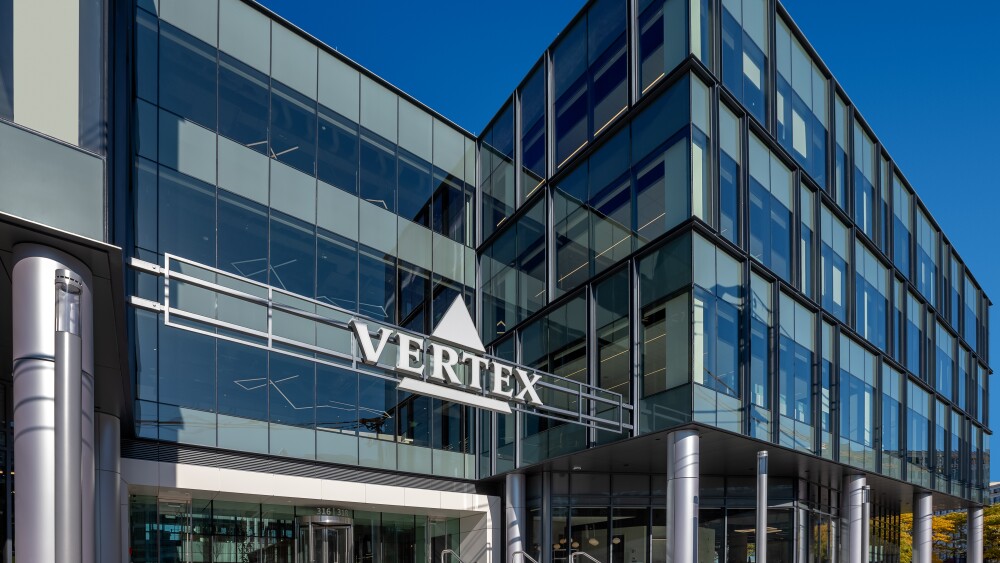HAYWARD, Calif., June 4 /PRNewswire-FirstCall/ -- Kosan Biosciences Incorporated presented data from a dose-escalating Phase 1b clinical trial of its lead Hsp90 inhibitor, tanespimycin (KOS-953) in combination with bortezomib (Velcade(R)), showing a high degree of antitumor activity and tolerability in patients with multiple myeloma who had previously progressed following treatment with multiple conventional therapies. The data were presented on Saturday, June 2, 2007, by Paul Richardson, M.D., Department of Hematology, Dana Farber Cancer Center, Boston, MA, in a poster titled "A Multicenter Phase 1 Clinical Trial of Tanespimycin (KOS-953) + Bortezomib in Relapsed Refractory Multiple Myeloma" at the 2007 Annual Meeting of the American Society of Clinical Oncology (ASCO).
"Tanespimycin has significant potential as a new treatment for patients with multiple myeloma and is promising in patients with refractory disease whose need for new therapeutic options is especially important," said Dr. Richardson. "The overall profile of tanespimycin in terms of antitumor activity and tolerability, with no additive toxicity to bortezomib, is attractive and we are excited to be moving into later-stage clinical development."
"With the initiation of our TIME clinical program later this year, utilizing our new, superior injectable suspension formulation, tanespimycin will be the first Hsp90 inhibitor to enter registration trials and has the potential to be the first Hsp90 inhibitor to reach the market," said Robert G. Johnson, Jr., M.D., Ph.D., Kosan's President and Chief Executive Officer. "We are highly encouraged by the level of tanespimycin's activity in multiple myeloma and its tolerability and safety profile, and believe that tanespimycin has the potential to represent a breakthrough in the treatment of multiple myeloma. We appreciate the support of the myeloma physician and patient communities for the advancement of tanespimycin and look forward to the start of our TIME program."
Tanespimycin Phase 1b Trial Results
The objective of the Phase 1b dose-escalating trial was to define a Phase 2/3 dose of tanespimycin in combination with bortezomib in patients with relapsed, refractory multiple myeloma, as well as to assess pharmacokinetic and pharmacodynamic parameters. Dose escalations in the trial ranged from 100- 340 mg/m2 for tanespimycin, and from 0.7-1.3 mg/m2 for bortezomib. Patients received tanespimycin via 1-hour infusion following the bortezomib dose 2 times per week every 2 weeks out of 3 weeks.
Data on 56 patients enrolled in 7 dose cohorts (100-340 mg/m2 of tanespimycin; 0.7-1.3 mg/m2 of bortezomib) were reported. Of the 28 patients enrolled in cohort 7 (340 mg/m2 tanespimycin, 1.3 mg/m2 bortezomib), 19 received the Cremophor formulation of tanespimycin and 9 patients received the new injectable suspension formulation of tanespimycin.
Of these 56 patients, all had received multiple prior chemotherapy regimens (median of 4), and 67% had received bone marrow transplants.
Responses were observed across dose cohorts in bortezomib-naove, pretreated and refractory patients (refractory is defined as having no response to prior bortezomib or having progressed on or within 60 days of their last dose of a bortezomib-containing regimen). Response rate in multiple myeloma is measured primarily by the level of myeloma (M) protein in the patient's bone marrow. In those patients who received a dose of 1.0 or 1.3 mg/m2 of bortezomib, the overall response rate including complete, partial and minimal responses was 44% (18 out of 41 patients evaluable for response):
-- 8 out of 14 bortezomib-naive patients (57%); -- 7 out of 16 bortezomib-pretreated patients (44%); and -- 3 out of 11 bortezomib-refractory patients (27%). In the bortezomib-refractory group, the following patients responded: -- 1 patient with 4 prior regimens had a confirmed partial response after 2 cycles and continues in the trial for more than one year (cycle 23+; M-spike best decrease 96%); -- 1 patient with 3 prior regimens had a confirmed partial response after 2 cycles and continues in the trial after more than 46 weeks (cycle 15+; urinary M-protein not measurable); and -- 1 patient with 7 prior regimens had a confirmed partial response after 3 cycles and was in the trial for 23 weeks (completed 8 cycles; M-spike maximal decrease 89%) and was removed from study while still in partial response; 4 months later, the patient remains in partial response (total 39+ weeks).
Of the 9 patients treated thus far with the new tanespimycin injectable suspension, 5 patients are evaluable and 3 patients to date have demonstrated a response.
The combination of tanespimycin and bortezomib was well-tolerated. There was no significant increase in toxicity observed in the combination of tanespimycin and bortezomib when compared with historic single agent bortezomib experience. Common toxicities, which were mild-to-moderate as well as manageable and reversible, were primarily gastrointestinal events (diarrhea, nausea, vomiting), fatigue, elevated liver function tests, myalgia and peripheral edema. Common toxicities associated with bortezomib included thrombocytopenia (Grade 3-4 at 1.3 mg/m2) and neuropathy (Grade 1-2, at 1.3 mg/m2); importantly, the rate of peripheral neuropathy was relatively low. No cardiovascular toxicity and no Cremophor hypersensitivity were observed.
TIME Registration Program to Begin 3Q07
Kosan's TIME registration program is on track to be initiated in the third quarter of 2007. The TIME program includes two trials. TIME-2 is anticipated to begin in the third quarter of 2007, followed one to two quarters later by TIME-1.
TIME-2 is a Phase 2/3 trial in patients with relapsed-refractory multiple myeloma. The multi-site, open-label trial will be conducted primarily in the US and Europe. TIME-2 will compare three different dose groups of tanespimycin each in combination with bortezomib. Eligible patients must have failed three prior multiple myeloma regimens, including one each of bortezomib and lenalidomide (Revlimid(R)). The primary endpoint is objective response rate.
TIME-1 is a Phase 3 trial in patients with disease relapse following a single prior course of treatment (first-relapse). It is a randomized, open- label, multi-center international trial with a primary endpoint of progression free survival (PFS). The trial will compare two groups: patients treated with bortezomib plus tanespimycin and patients treated with bortezomib alone.
About Kosan
Kosan Biosciences is a biotechnology company advancing two new classes of anticancer agents through clinical development -- Hsp90 (heat shock protein 90) inhibitors and epothilones. Kosan is leveraging its proprietary discovery platform to generate a pipeline of potentially significant product candidates, primarily in the area of oncology.
Hsp90 inhibitors have a novel mechanism of action targeting multiple pathways involved in cancer cell growth and survival. Kosan's proprietary formulation of tanespimycin (KOS-953) is currently in Phase 1 and 2 clinical trials, primarily for multiple myeloma in combination with Velcade(R) (bortezomib) and HER2-positive metastatic breast cancer in combination with Herceptin(R) (trastuzumab). In addition, intravenous and oral formulations of Kosan's second-generation Hsp90 inhibitor, alvespimycin (KOS-1022), are being evaluated in Phase 1 clinical trials.
Epothilones inhibit cell division with a mechanism of action similar to taxanes, one of the most successful classes of anti-tumor agents. KOS-1584 is in Phase 1 clinical trials in patients with solid tumors. Kosan's epothilone program is partnered with Roche through a global development and commercialization agreement.
For additional information on Kosan Biosciences, please visit the company's website at http://www.kosan.com.
This press release contains forward-looking statements within the meaning of the "safe harbor" provisions of the Private Securities Litigation Reform Act of 1995 (the "Act"). Such forward-looking statements include but are not limited to the further development and potential safety, efficacy, commercialization, and other characteristics of tanespimycin, and Kosan's development plans with respect to tanespimycin, including but not limited to Kosan's plans and timing for the initiation of the TIME registration program. Any statements contained in this press release that are not statements of historical fact may be deemed to be forward-looking statements. There are a number of important factors that could cause the results of Kosan to differ materially from those indicated by these forward-looking statements, including, among others, risks related to the development of tanespimycin, including the risk that studies may not demonstrate safety and efficacy sufficient to initiate clinical trials, continue clinical development, obtain the requisite regulatory approvals or to result in a marketable product; and other risks detailed from time to time in the Company's SEC reports, including its Quarterly Report on Form 10-Q for the quarter ended March 31, 2007 and other periodic filings with the SEC. Kosan does not undertake any obligation to update forward-looking statements.
Velcade(R) (bortezomib) is a registered trademark of Millennium Pharmaceuticals, Inc.
Herceptin(R) (trastuzumab) is a registered trademark of Genentech, Inc.
Revlimid (R) (lenalidomide) is a registered trademark of Celgene Corporation
Kosan Biosciences IncorporatedCONTACT: Jane Green, VP, Corporate Communications of Kosan,+1-510-731-5335, cell, +1-415-652-4819, green@kosan.com
Web site: http://www.kosan.com/




